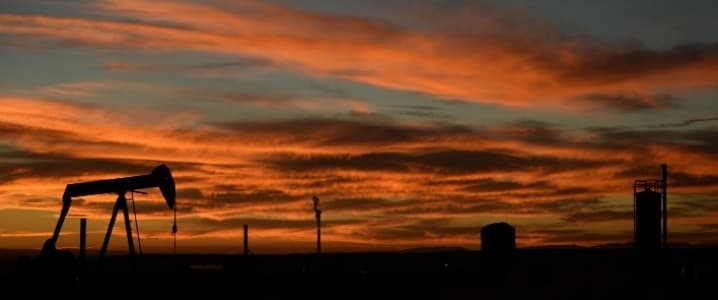Yesterday's decision by the Federal Reserve to raise interest rates has inadvertently put concrete boots on the crude complex, sending it lower amid a soaring U.S. dollar. Hark, here are five things to consider in oil markets today.
1) BP has announced that its Grande Plutonio oil field has reached the production milestone of 500 million barrels of oil. The field became operational in late 2007, with production capacity of 144,000 barrels of oil per day. As our ClipperData illustrate below, Plutonio is one of a number of key Angolan export grades. Export loadings of Plutonio have averaged 110,000 bpd so far this year through November, while total Angolan exports average ~1.645mn bpd:
(Clcik to enlarge)
2) So much talk about OPEC / NOPEC compliance is great from a ClipperData perspective, given our unique insight into the opaque world that is tanker tracking. Two updates on this topic jumped out in the last 24 hours; the first is that an OPEC monitoring committee will likely gather for its first meeting next month or February.
The second is via @liamdenning (who we regularly, and unashamedly, pilfer from). He points out that it’s not worth trying to track OPEC and oil flows until next year. But his view is not predicated upon a lack of developments on the OPEC front, but more related to inventory changes in December due to ad valorem tax strategies.
As the chart below illustrates, U.S. crude inventories are nearly always drawn down in December - to avoid paying taxes on crude inventories. Since 1980, inventories have only risen in five of the last thirty-six years. So despite the flattening of the forward curve, its impact on disincentivizing putting oil into storage can't properly be assessed until next year - similar to OPEC / NOPEC compliance. Related: Leaked Memo Reveals Trump’s Energy Priorities
(Click to enlarge)
3) According to Bloomberg New Energy Finance, new unsubsidized solar projects are beginning to beat the costs of oil and natural gas. What is even more surprising, however, is that new solar projects in emerging markets are beating wind projects.
The chart below is based on the average wind and solar costs from 58 emerging market economies. While solar has been expected to surpass wind costs eventually, it has been unexpected to see this happen this soon.
(Click to enlarge)
4) Yesterday we outlined how a simple back-of-the-envelope calculation justified Saudi Arabia’s decision to push OPEC to cut production, without even considering the detrimental impact on the kingdom's economy. Well, the graphic below from WSJ outlines these impacts rather nicely - and pits them versus the detrimental impacts to the U.S. shale industry. Related: Oil Spikes After EIA Reports Surprise Draw To Crude Inventories
While the price war of the last two years has caused a fairly severe budget deficit to Saudi Arabia, as well as considerably lower economic growth, the impact to the U.S. has been the bankruptcy of over 100 companies. While OPEC production now accounts for 42 percent of global supply - after falling below 40 percent in 2014 - U.S. shale is expected to have the better of the next two years, at least according to Pioneer Natural Resources CEO, Scott Sheffield: 'the U.S. is going to win the next two years because OPEC is cutting and U.S. shale is taking off'.
ADVERTISEMENT
(Click to enlarge)
5) Finally, protesters in Libya who have been blockading pipelines to the Sharara and El Feel oil fields have committed to reopen them. It is estimated that reopening the fields could add 365,000 bpd of production, with an initial restart happening as soon as the coming days. According to our ClipperData, export loadings so far this month are at 450,000 bpd, after finishing above the 500,000 bpd level last month for the first time in over two years.
By Matt Smith
More Top Reads From Oilprice.com:
- Post OPEC Deal: Nigeria Plans To Increase Oil Output By 500,000 Bpd
- Why It Makes Economic Sense For The Saudis To Cut
- After Agreeing To Cut, Is OPEC’s No.2 Going Rogue?






















